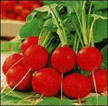 History and reality
History and reality
Holy Radrate consider Central Asia. In Europe, he appeared in the XVI century, first in the form of ... White Carrot. Over time, as a result of selection, crisp vegetable acquired bright pink, red, purple, yellow and even motley "uniforms". The flesh is most often white, but sometimes and red. By weight, the roots vary from 10-20 g to 0.4 kg, while their taste remains gentle - for example, long-lying varieties of ice icicle, red
Giant, etc. And some varieties are edible even the tops.
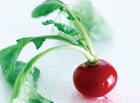 Healing properties
Healing properties
The vegetable contains a lot of valuable, easily absorbed by the organism of substances (calcium mineral salts, potassium, phosphorus, iron, magnesium) and vitamins. It is enough a beam of fresh radishes to satisfy the daily need of a person in Vitamin C. That's why this vegetable is simply indispensable in early spring, when the lack of vitamins and the decline of the forces is felt especially acute! It is useful to radishes to people with a bad appetite and even with a bad mood, during atherosclerosis and hypertension. In China, it is rubbed and make compresses with radiculitis and neuralgia. Recent studies of scientists have shown that, among other things, it is effective for the prevention of ISH-MIC heart disease. But you need to use a vegetable with caution with a sulfur stomach ulcer, as well as with severe kidney and liver diseases.
 Agrotechnika
Agrotechnika
Radish is a cold-rescue culture, its seeds begin to germinate at a temperature of + 2-3 degrees, (although 15-20 degrees are considered optimal.). The best predecessors are potatoes, tomatoes, cucumbers, onions and beans, but do not suck it after cabbage and radish, since they have common diseases and pests. Crisp vegetable loves good lighting, loose fertile soil and constant moderate humidity. Organic fertilizers are brought only under the previous culture. Redisse is inclined to increased nitrate accumulation, therefore it is not fettered by nitrogen fertilizers.
In the open ground, the seeds are seeded when the soil warms up to a depth of 3-5 cm (usually in April; in the southern regions it is possible before, but in the "warm" bed). Make grooves at a distance of 10-15 cm, seeds are placed after 3-4 cm from each other, close to a depth of 1.5-2 cm. For fresh products, a long time can be heated by several times with a periodicity of 7-10 days. To speed up the appearance of germs, seeds before sowing. For this, they scattered radiant between the layers of gauze, they are soaked in water for two hours in a small capacity, which is placed in a warm place. As soon as the seeds begin to slam, they are sown.
In the initial period of growth, the need for water in radishes is small, but from the moment of the formation of root, it increases. In cold weather, plants are rarely watered and moderately, with the onset of warm days - often and abundantly (in the heat the weekly irrigation rate should be near Yul / sq. M). The lack of water leads to early girlfriend, the root crusts become hard, small and tasteless, with a long coarse root.
 Pests
Pests
To prevent defeats with crusher fleas (the pest can destroy the crops before the appearance of germs!) So that there are no weeds on the garden, frequent springs and soil loosenings are carried out. In the morning, once a week, pollinated wood ash or spray with informs of garlic, tobacco.
Large damage can also apply a cabbage fly (from mid-May until the end of June puts up on the ground near the stem of radish or the stem of the egg, of which after 6-7 days
The larvae leaves). The pest emanns the roots, shifts the moves in root, as a result of which they become unsuitable. To combat flies, a scaring mixture is used (100 g of wood ash, 100 g of tobacco dust and 1 tsp. Ground pepper). It is made in a river, after that the soil loosened to a depth of 2-3 cm.
A good protection tool (including and from sharp cooling) is a shelter of the beds with spunbond, which is strengthened on wire arcs. The use of "chemistry" during the cultivation of radish is unacceptable by sanitary and hygienic standards.
 For information
For information
• Radisi perfectly "gets around" with other cultures. Its seeds can be heated along with the seeds of carrots or onions (these plants will only go through two weeks, and the "our comrade" will have small roots).
• It is easy to grow it on the balcony, in a cool, but not raw place. For this, there are 10 cm deep boxes (for varieties with round roots) or a depth of at least 20 cm (for elongated).
• Clean radisis selectively. In the early grades, the first collection begins in 20-23 days after germination, among the middle-friendly - in 25-27 days.
• Roots are well stored at 0-1 degrees. It is possible to extend their freshness if, without breaking the tops, put the leaves down into a bowl with a small amount of cold water, put in a cool place and periodically spray.
 Our sorting
Our sorting
For growing in the middle strip of agriculture, the varieties of the Belarusian selection of Zarya are better suited (rarely; shortly; the roots of dark red, rounded and oval shape; the flesh is white, juicy, without bitterness) and alba (medieval; white oval root diameter of up to 3 , 5 cm; The consistency of the pulp gentle, dense, juicy).
Original to taste radishes with red-raspberry sorted sorted variety (period from shoots to cleaning - 22-27 days, rounded root crops weighing 20-25 g).
From the early high-yielding varieties of German selection, Alex and Hybrid Aleshka FL (from shoots to technical ripeness 20-26 days; bright red root, rounded, weighing 22-28 g, grown in the open ground from spring to autumn).
Medium Gybrid Isabella (resistant to flowerness) Gardeners fell in love with crispy bright red rounded root roots with a white tip.
Good Mid-Like Oil Giant (Bright Red, Rounded roots, in diameter up to 10 cm; Puffed juicy and gentle; for growing in summer) and middle-beds red Giant (cylindrical root crust, up to 20 cm and weight up to 100 g).
An early grade of a French breakfast is also well established (resistant to flowerness, bright red cylindrical roots with a white tip) and mid-arm-cream rounded roots), ice icicle (resistant to shorting and flabbing, white spine-like rooted roots up to 15 cm long, Weighing up to 60 g).
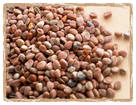 And I do it!
And I do it!
His seeds
I get seeds of radish itself. In the spring - at the beginning of the summer, three-five large root roots (royalties) cut off the Bottva, leaving greens by 1-1.5 cm, and half the roots. I plant a triangle or in a circle (at a distance of 40-60 cm from each other). When they grow up, in the center I drive the peg, to which in the future we climb the twine of the arrow. It will begin to ripen seeds - I put on a bush grid, gauze or tulle. This is protection against voracious sparrows. In the fall, we clean dry twigs with pods, in winter in the free days of the seeds. They are enough for 2-3 years, the germination is good.





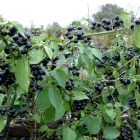

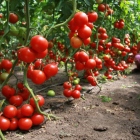
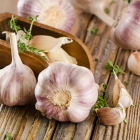


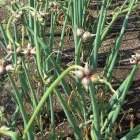
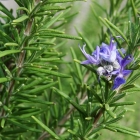
 Start a discussion ...
Start a discussion ...